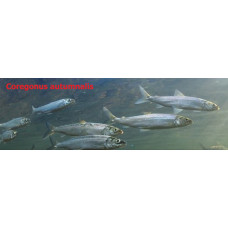Animal-eating fishes are fishes that consume animal food. They are subdivided into planktophagous (herring, herring, rowan, omul, spruce, etc.), benthophagous (bream, crucian carp, muksun, teal, etc.), detritophagous (temmura, etc.).
Fish are divided into peaceful and predatory fish. Peaceful fish may feed on invertebrates, vegetation and detritus. These include peaceful animal-eaters: planktonophagous (herring, some whitefish, etc.) and benthosophagous (bream, some whitefish, etc.); phytophagous (redfin, herbivorous Far Eastern carps - bighead carp, white amur, Amur bream, etc.); detritophagous (Transcaspian tempura, etc.); detritophagous (Transcaspian tempura, etc.); phytophagous (redfin, herbivorous Far Eastern carps - bighead carp, white amur, Amur bream, etc.). ); detritophages (the Transcaspian tempura, etc.). Predators feed on fish, and in case of other vertebrates. However, this division is relative: many fish are omnivorous (carp, carp), sometimes benthosophages can switch to feeding on plankton, and peaceful animal-eaters in the absence of conventional food become predators. Adaptability of different species of fish to a certain type of food is clearly manifested in the structure of the digestive tract - mouth, gill apparatus, pharynx, intestines. In animal-eating fish, the length of the intestine is less than 100% of the body length, in herbivorous fish - more than 100%, ie, the intestinal tract is long.
Animal-eating fish
Tags: animal eating fish


